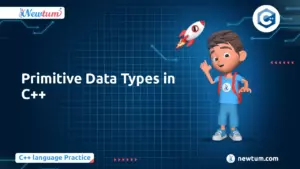PHP Echo and Print Statement: Are you new to PHP and curious about displaying text on the screen? Two commonly used PHP commands, echo and print, can do just that. In this blog, we’ll explore the differences and similarities between echo and print, how to use them effectively, and some tips to help you choose the right one for your code.
What is echo in PHP?
The echo statement is one of the most widely used commands to display output in PHP. It can output one or multiple strings and is generally faster because it doesn’t return any value.
Syntax and Examples
<?php
echo "Hello, World!";
echo "Learning PHP", " is fun!";
?>In this example:
- The first
echooutputs a single string, “Hello, World!”. - The second
echocombines multiple strings using commas.
Key Points about echo
- No Return Value:
echodoes not return any value, making it slightly faster. - Multiple Parameters: You can use commas to separate multiple strings.
- Not a Function:
echois technically a language construct, which is why parentheses are optional.
What is print in PHP?
The print statement is another way to output text, similar to echo, but with one notable difference: print returns a value of 1, which means it can be used in expressions.
Syntax and Examples
<?php
print "Hello, World!";
$success = print "Learning PHP";
?>In this example:
- The first
printstatement outputs “Hello, World!”. - The second
printstatement outputs “Learning PHP” and assigns the return value (1) to the$successvariable.
Key Points about print
- Returns a Value:
printreturns 1, which allows it to be used in expressions. - Single Parameter:
printcan only take one argument, so you can’t use commas to separate strings. - Slightly Slower: Because
printreturns a value, it is slightly slower thanecho.
echo vs. print: Key Differences
Below is a quick comparison to help you decide when to use each:
| Feature | echo | print |
|---|---|---|
| Return Value | None | Returns 1 |
| Parameters | Multiple | Single only |
| Speed | Slightly faster | Slightly slower |
| Usage in Expression | Not usable | Usable in expressions |
In short: If you’re outputting text without needing a return value or expression, use echo. If you need to use the output in an expression, print is the way to go.
Practical Uses of echo and print
Simple Text Output
Both echo and print are ideal for displaying static text on a webpage. Here’s how you can use each to display a welcome message:
<?php
echo "Welcome to my Newtum!";
print "Thanks for visiting!";
?>Displaying Variables
You can also use echo and print to display variables. Here’s an example:
<?php
$name = "John";
echo "Hello, ", $name;
print "Hello, " . $name;
?>Combining HTML with PHP
echo and print are often used to display HTML within PHP. Here’s how:
<?php
echo "<h1>Welcome to my website</h1>";
print "<p>Explore our content and learn PHP!</p>";
?>When to Use echo or print
- Use
echowhen you want to output multiple items in a single statement, as it allows multiple parameters. - Use
printif you need the return value or are only displaying one string.
Common Mistakes to Avoid
Expecting Multiple Arguments in print: print only accepts one parameter, so attempting print("Hello", "World"); will lead to an error.
Using Parentheses with echo for Multiple Strings: echo doesn’t require parentheses, so echo("Hello", "World"); will cause an error. Simply write echo "Hello", "World";.
Common Interview Questions on PHP Echo and Print Statement
- What is the main purpose of the PHP Echo statement?
To output data to the screen without returning any value. - Can Echo handle multiple parameters?
Yes, Echo can output multiple strings separated by commas. - How does Print differ from Echo in terms of return value?
Print returns a value of 1, unlike Echo. - Which statement is generally faster?
Echo is generally faster because it does not return a value. - When should Print be used over Echo?
Use Print when you need a return value for further expressions.
Conclusion
The journey with the ‘PHP Echo and Print Statement’ is just beginning. These foundations will support your PHP learning curve. Keep practicing and explore more about these constructs on Newtum for comprehensive guides. Ready to dive deeper? Let’s code the world!
Edited and Compiled by
This blog was compiled and edited by Rasika Deshpande, who has over 4 years of experience in content creation. She’s passionate about helping beginners understand technical topics in a more interactive way.



